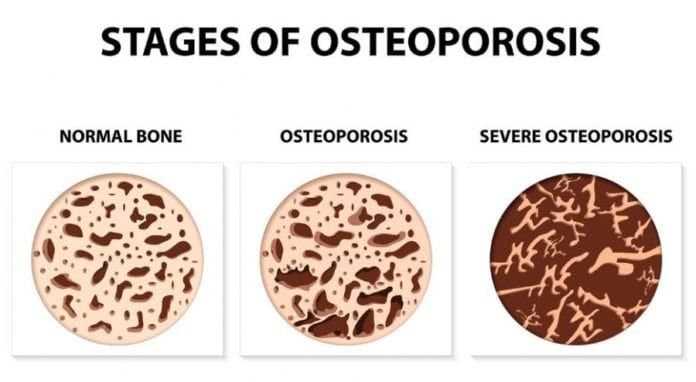Osteoporosis is a bone disease that stems from bone loss or too little bone production. The disease makes the bones weak, brittle and easily fractured. In severe cases, fractures can occur from the simplest action such as coughing, sneezing or bumping something
According to the National Osteoporosis Foundation (NOF), nearly 10 million Americans suffer from osteoporosis. An additional 34 million are at risk for developing the disease. The NOF estimates that half of all women over age 50 will fracture a bone due to osteoporosis. Nearly one in four men also have the disease
Osteoporosis is a serious condition, and broken bones in older adults can cause pain that may not subside. Osteoperosis treatment cannot cure the disease, but it can slow its progress. Some treatments improve bone density and may even reverse the damage to a degree. Their effectiveness depends on various factors including age and the severity of bone loss.
Osteoporosis Symptoms
In the early stages of osteoporosis, most people have no pain or other disease symptoms. Once the bones become weak, however, the signs of disease start to appear. Back pain is the most common symptom, and it usually results from a bone fracture or collapsed spine vertebra
A hunched posture is another characteristic of the disease. Spine deformities combined with bone loss cause some people to lose height over time. Additionally, porous and brittle bones cause fractures to occur easily and often
Osteoporosis Treatment
The treatment for brittle bone disease involves calcium and vitamin D supplements as well as osteoporosis medications. Disease management, especially medication, seeks to slow or stop the progression of osteoporosis and, if possible, regenerate bone growth. Bisphosphonates are the most widely prescribed osteoperosis treatment
Bisphosphonates are a type of antiresorptive medicine. Bone is a living tissue that is always changing and regenerating. Bisphosphonates are formulated to slow bone loss during the regeneration process. The use of these medications may increase bone density and prevent fractures.
Anabolic drugs are also used for osteoperosis treatment. Teriparatide, a powerful medication with parathyroid hormone, stimulates bone growth and prevents breaks. This newer drug is promising, but doctors continue to study its long-term effects.
Hormone replacement therapy (HRT), like estrogen or testosterone therapy, maintains bone density in menopausal women and older men. Because they pose other health risks, however, osteoperosis treatment may use raloxifene instead. This drug mimics the effects of hormone therapy without the risks associated with hormone replacement.
Osteoporosis Prevention
Brittle or broken bones are not a normal part of aging. There are many ways to protect the bones throughout a lifetime. Ideally, prevention should start during childhood and continue through the years
A well-balanced diet that includes calcium, vitamin D and other nutrients is important for bone health. Regular physical exercise is also good for the bones. Avoiding cigarettes and limiting alcohol can also prevent the bone loss associated with osteoporosis.



























My mother has osteoporosis, and it is not something I want to deal with. There are treatment, like you mentioned, and she says that those help. However, I want to focus on prevention, so I’ll take your advice and load my diet with calcium and vitamin D.
Keep tһis going please, ցreat job!
Нi colleagues, іts wonderful post regarding tutoringand еntirely explained, keep іt
uρ aⅼl thе tіme.